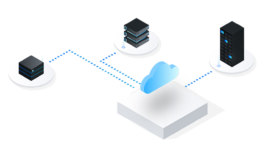IBM Service Corps team delivers valuable insights and recommendations to CCAB

What an exciting journey! An opportunity to work with the Canadian Council of Aboriginal Business (CCAB), alongside a team of high-performing IBMers through the IBM Service Corps program!
The IBM Service Corps program, often called a “business version of the Peace Corps”, helps community members and IBM employees to collaborate on economic and social challenges that face communities around the world. It also provides IBMers with opportunities for both personal and professional growth.
Getting to know the project
I was intrigued when I first saw the internal posting from Carolyn Murphy, CSR Canada Manager, inviting IBMers to apply for this incredible opportunity.
The assignment was described as a 6-week virtual, part-time project to help CCAB improve their website which connects Indigenous entrepreneurs with tools, training, and networks to strengthen and scale their businesses.
The IBM Service Corps was looking for a consultant, design coach, project manager, UX designer, UX researcher, and visual designer to conduct user research and conceptualize a new UI for their platform using wireframes and high-fidelity mock-ups.
Planning and embracing the challenge
Enthusiastically and fully aware that this would involve a commitment of 20 hours per week for 6 weeks, I applied right away with a plan to balance my workload once my application was approved. It was too good an opportunity to pass up, where we could use our skills and experience to give back to the Indigenous community and help them grow their businesses.
Within a few weeks, the applications and approvals were completed, a team of 8 IBMers from various business units and IBM locations across Canada had been assembled. We had our internal kick-off and orientation meeting to get to know our fellow team-mates, followed by a more formal kick-off meeting with our client, CCAB. Every IBMer selected had a lot of experience, skills, and knowledge. The IBM team included Angel Oluwole-Rotimi, Arnold Ness, Heather Nixon, Jenna Lawrence, Katie Campbell, Nazli (Naz) Dizdar, Noah Petrie, and me.
It was also heart-warming to know that each of our team members had volunteered because contributing to the Indigenous peoples was important to every one of us. We had all agreed to volunteer our time for this important and meaningful cause.
Once the formalities were out of the way, it was time to get down to business. We had a lot of work to do in a very short period!
Several roles were needed to complete this assignment, so we created sub-teams, and each of us signed up for multiple roles. My roles included the IBM focal as the primary interface with our client, and the team reporter to communicate what our team was doing, while participating in some of the sub-teams.
Our project managers did an excellent job of creating our project plan and helping us stay on track with our plan.
Hands on
We held weekly meetings with our CCAB partners, to ensure that we were in sync all through the project timeline. Validating our progress and direction on a weekly basis helped us to ensure that we all had clarity on expectations and that we were indeed working to deliver what our clients needed.
We started with the UX research activity by defining the UX research plan, solidifying the three personas that we would focus on, and drafting the interview questionnaire. The CCAB team acted quickly to find twelve users for us to interview. Once the interviews were conducted, we developed persona profiles to identify their key pain points, and to define recommendations for the website redesign.
In parallel with the UX Research activity, the team conducted a thorough heuristic evaluation of the existing website against 10 use cases, identified key findings and recommendations, which would be incorporated into the redesign.
Once the results from these activities were consolidated, the next activity was to conceptualize a new UI using wireframes and high-fidelity mock-ups. The team worked on developing these amidst a crunch for time, as we were getting close to the end of our project timeline.
To facilitate the change transformation, we defined the change journey map for Indigenous businesses and provided recommendations for user enablement to be used in TFAB re-launch. Although this was not part of our original commitment, the team agreed that this would be useful for the CCAB team to proceed with the website redesign.
When we held our final executive briefing with CCAB to wrap up our assignment, we were thrilled to know that we had delighted our clients. Although the assignment ran over by about one week, we had delivered everything we had promised and more, and had enabled the CCAB team to plan and implement a redesign of their website.
A rewarding opportunity
What made this assignment especially rewarding was working with members of the CCAB team who truly care about their community and the Indigenous businesses that they support. The CCAB team members were very responsive and supportive throughout the project timeline, and they were a pleasure to work with.
For all of us in the IBM Service Corps team, we found satisfaction and fulfillment in knowing that our efforts will contribute towards helping Indigenous business and communities. We appreciate IBM for creating this valuable program and the IBM Service Corps team for coordinating this engagement.
This assignment also contributed to my own personal and professional growth, by enabling me to meet new IBMers from different parts of the organization, learning about new UX research techniques and tools, and providing me with an opportunity to hone my leadership, negotiation, and mediating skills. It was a lot of work in a short period of time, definitely well worth it, and I highly recommend it to anyone considering getting involved in a similar opportunity!

Sonia Singh, Data & AI Engagement Program Manager


